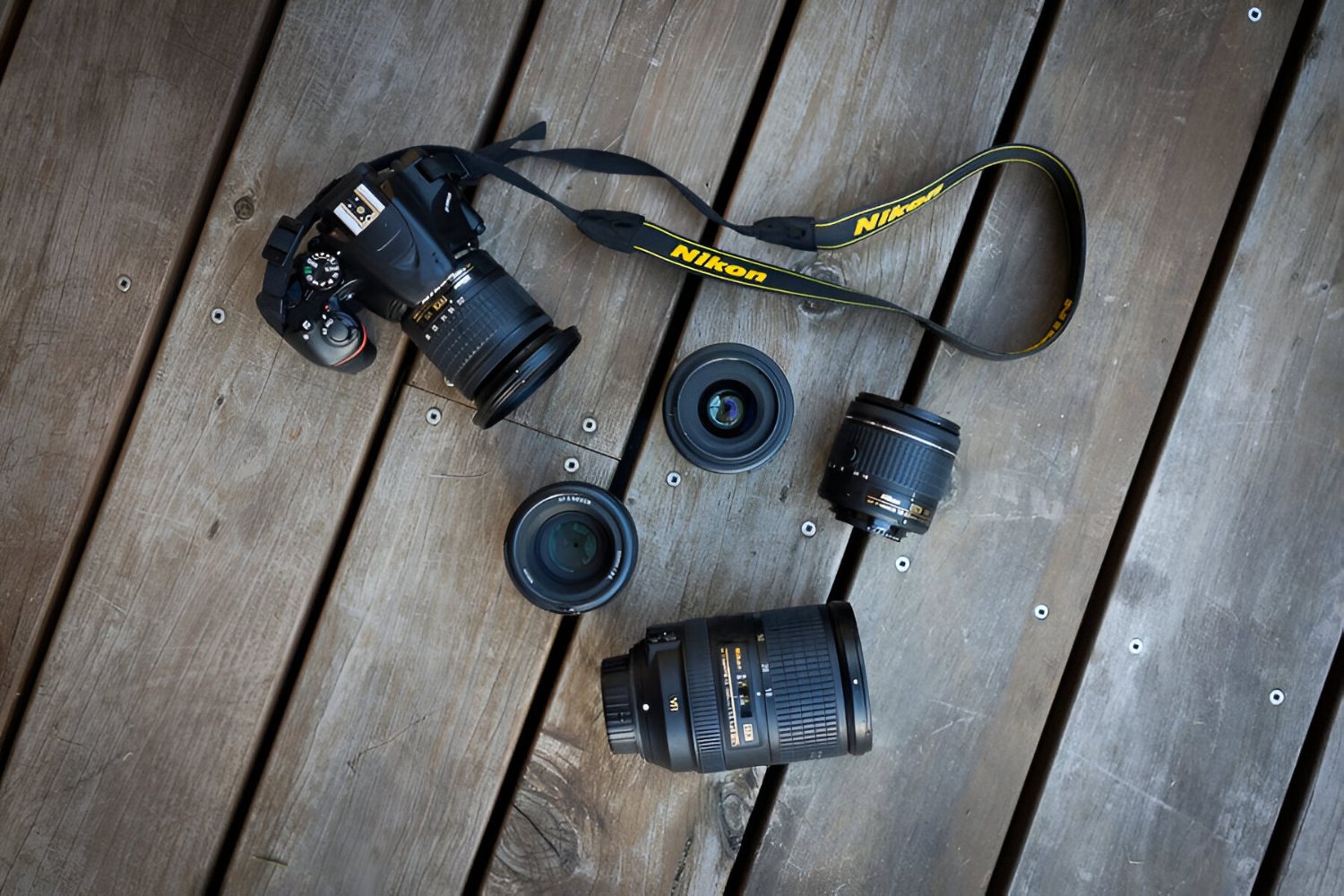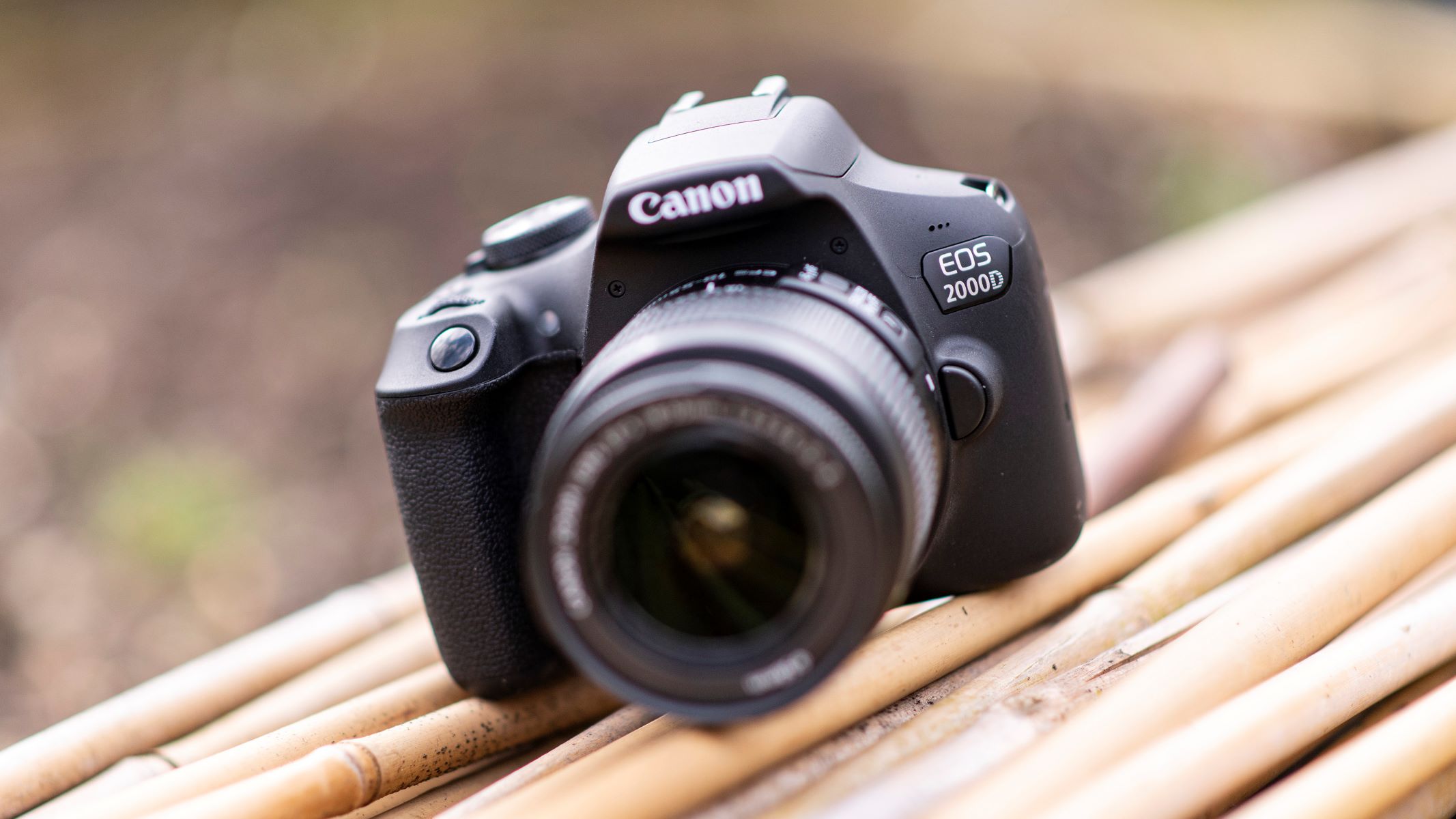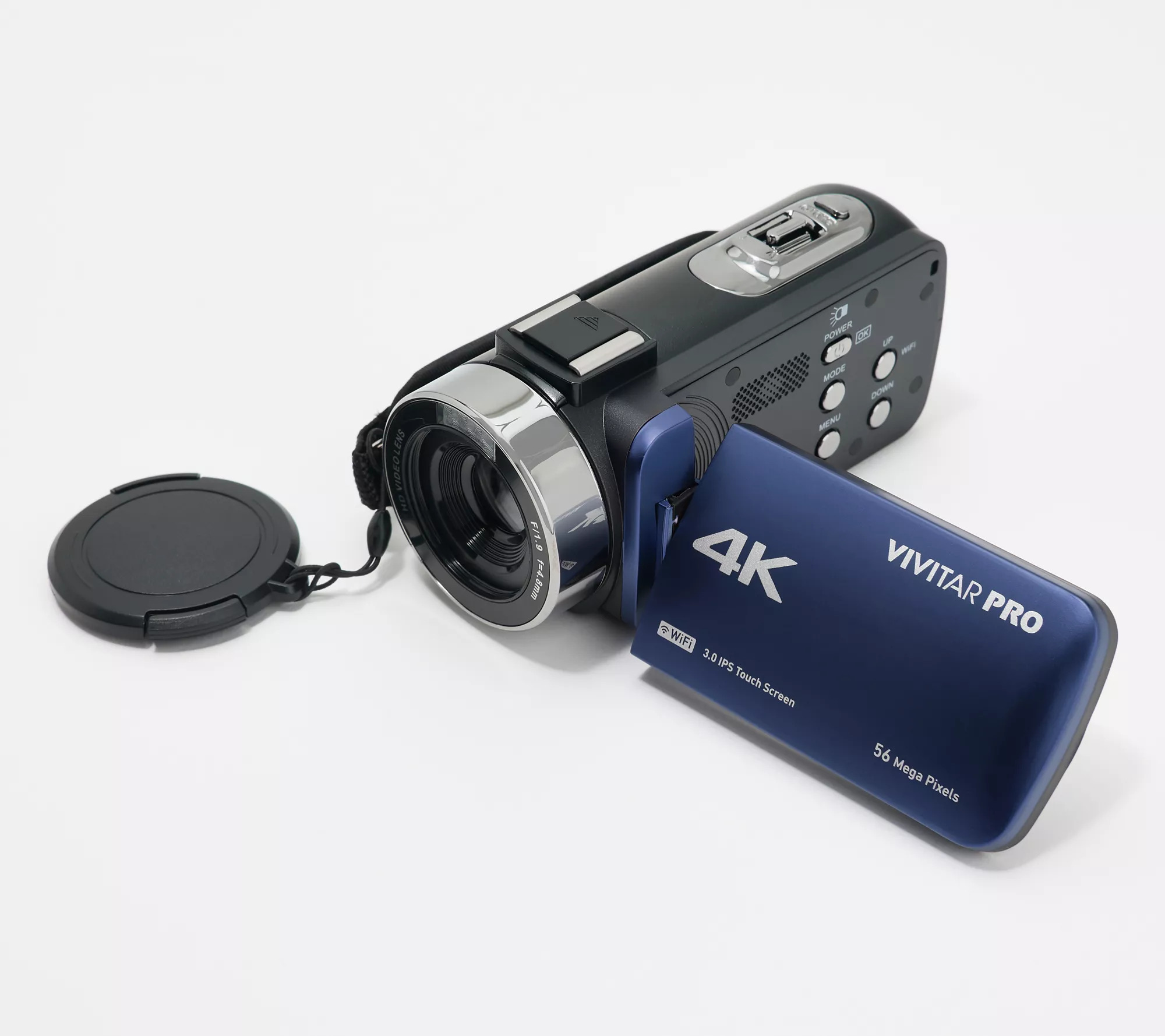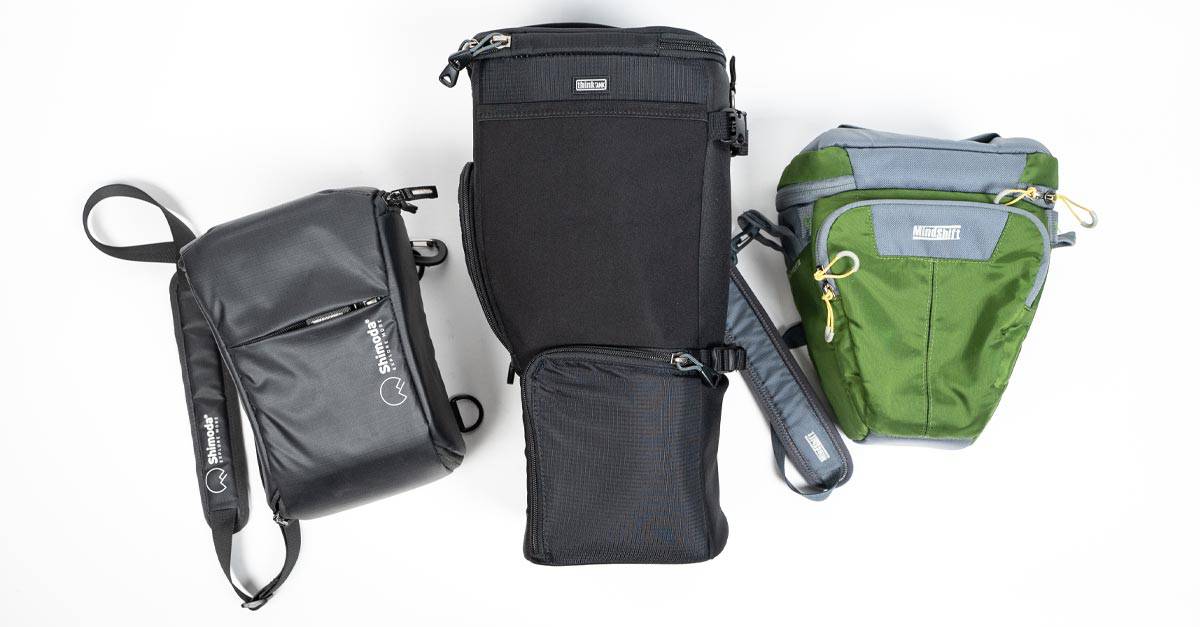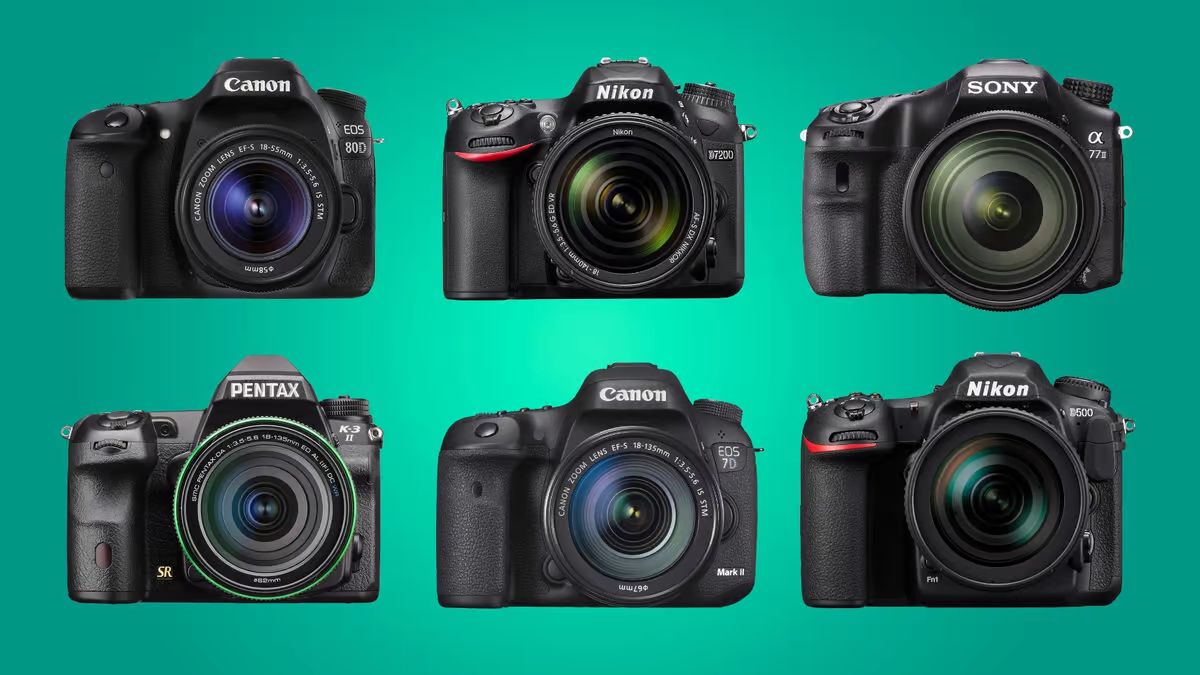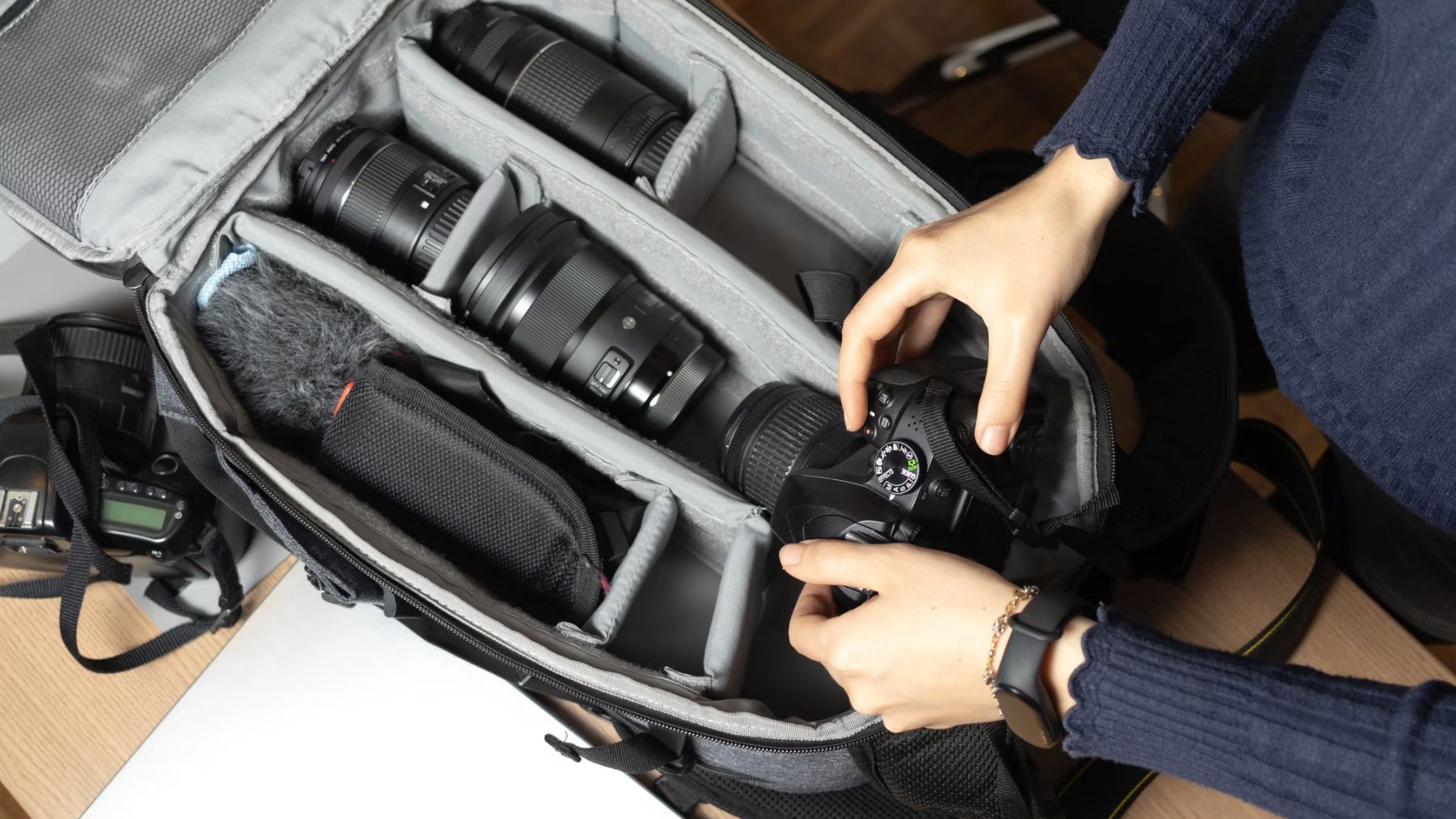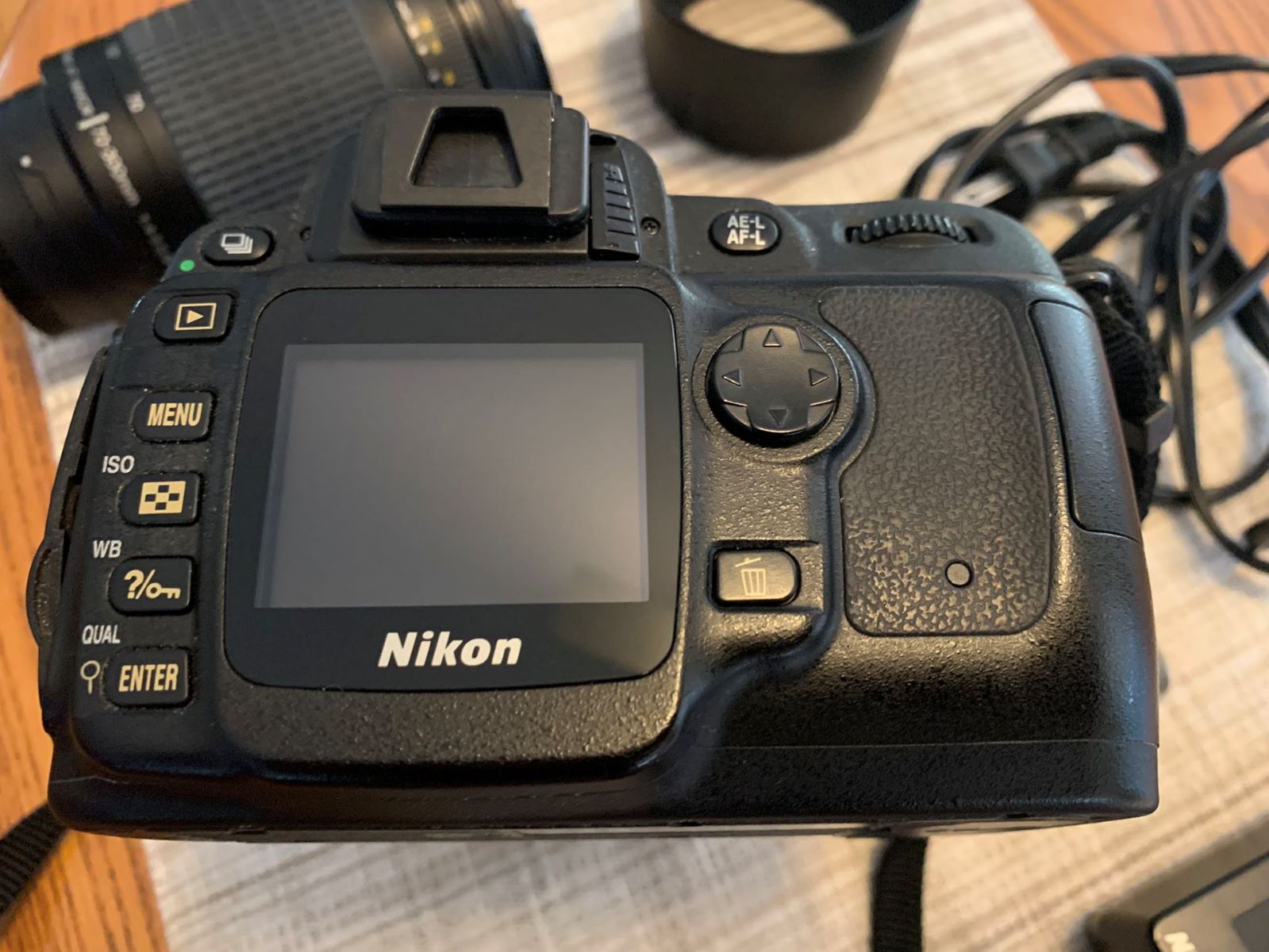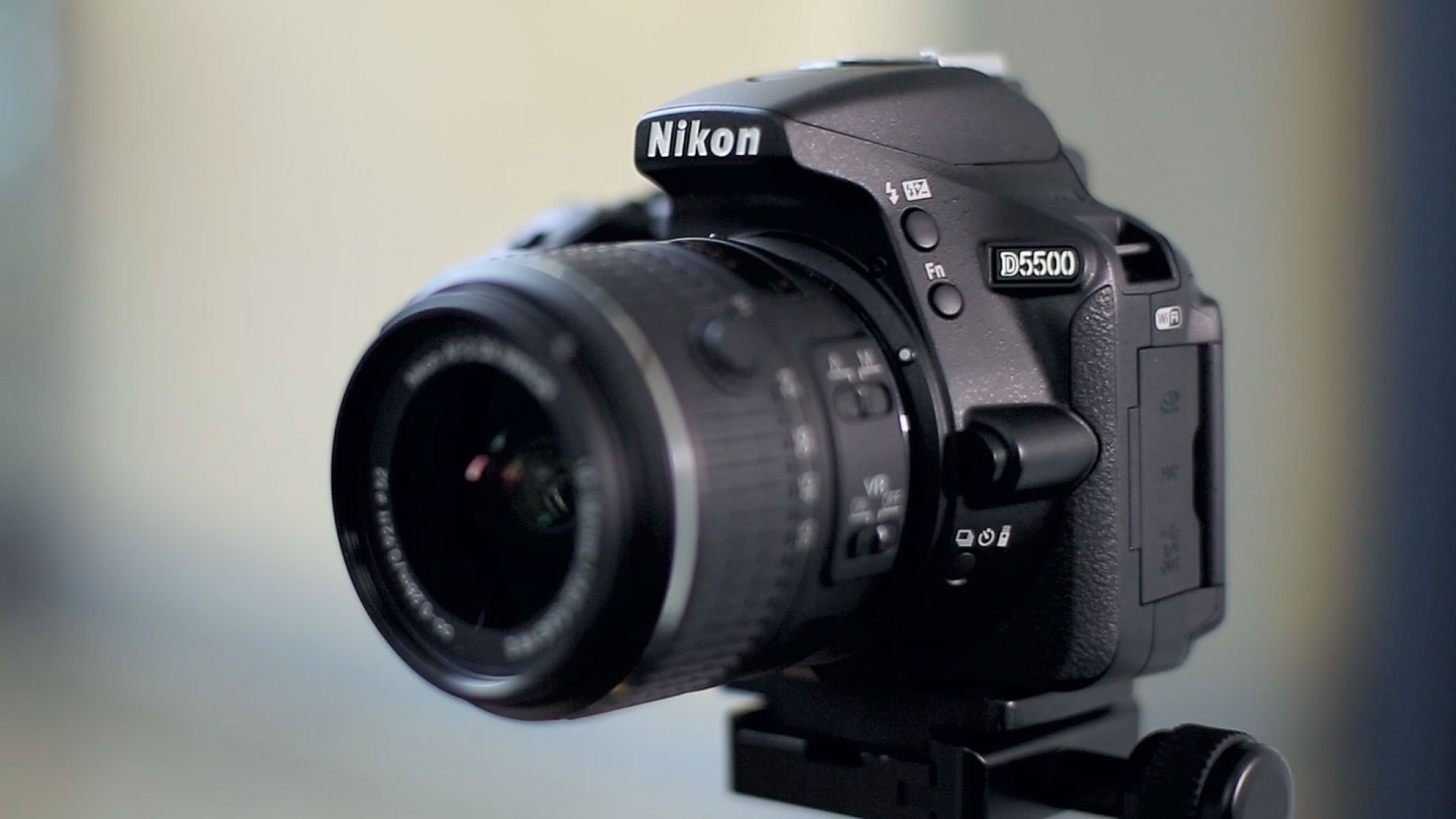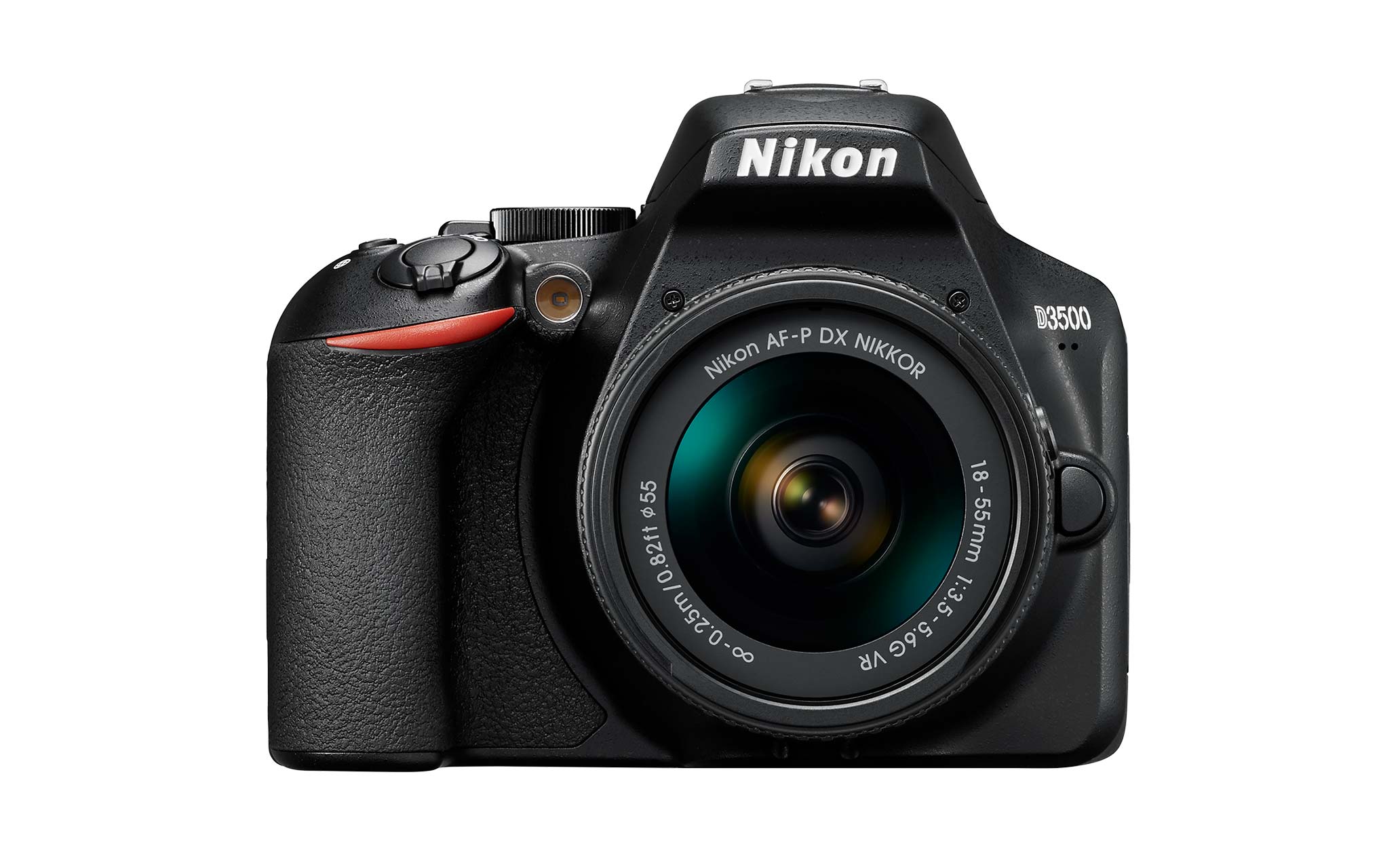Introduction
Welcome to the world of photography with the Nikon D3400 DSLR camera! Whether you are a novice eager to explore the art of capturing stunning images or an experienced photographer seeking to delve into the capabilities of this powerful device, this guide is tailored to help you make the most of your Nikon D3400.
The Nikon D3400 is renowned for its user-friendly interface, exceptional image quality, and versatility, making it an ideal choice for photographers of all levels. This guide will walk you through the essential features and functions of the D3400, providing valuable insights and practical tips to elevate your photography skills.
From mastering the basic camera settings to understanding exposure and utilizing different shooting modes, this comprehensive guide will equip you with the knowledge and techniques to unleash your creativity through captivating photographs. Additionally, you will discover valuable tips for working with lenses, improving composition, and excelling in various photography genres, including portrait, landscape, wildlife, macro, and street photography.
Moreover, we will delve into the nuances of low light photography, offering expert advice to help you capture remarkable images in challenging lighting conditions. Furthermore, you will learn how to edit and share your photos, enabling you to showcase your artistic vision with the world.
By the end of this guide, you will not only have a deep understanding of the Nikon D3400 DSLR camera but also possess the skills and confidence to capture breathtaking images that reflect your unique perspective and creativity. So, grab your Nikon D3400 and embark on this enriching journey to unlock the full potential of your photographic endeavors. Let's dive in and explore the fascinating world of photography with the Nikon D3400!
Getting to Know Your Nikon D3400
Before delving into the intricate details of photography techniques, it is essential to familiarize yourself with the Nikon D3400 DSLR camera. This compact and lightweight camera is designed to deliver exceptional image quality and seamless functionality, making it an ideal companion for photography enthusiasts.
The Nikon D3400 is equipped with a 24.2-megapixel DX-format CMOS sensor, enabling you to capture high-resolution images with remarkable clarity and detail. Its impressive ISO range allows for excellent performance in various lighting conditions, from bright daylight to dimly lit environments, ensuring that you can confidently capture stunning photos in diverse settings.
One of the standout features of the Nikon D3400 is its ability to shoot continuously at 5 frames per second, making it well-suited for capturing dynamic scenes and fast-paced action. Additionally, the camera’s EXPEED 4 image-processing engine enhances overall speed and performance, resulting in swift autofocus and seamless operation.
Understanding the physical layout and controls of the Nikon D3400 is crucial for harnessing its full potential. The camera boasts an intuitive interface, with strategically positioned buttons and dials that provide quick access to essential functions. Familiarizing yourself with the camera’s ergonomic design and user-friendly controls will empower you to navigate its features effortlessly, allowing you to focus on composing and capturing compelling images.
Furthermore, the D3400’s built-in Guide Mode serves as a valuable tool for beginners, offering step-by-step assistance and explanations for various camera settings and shooting modes. This feature simplifies the learning process, making it easier for new users to grasp the fundamentals of photography and gradually transition into more advanced techniques.
As you embark on your photographic journey with the Nikon D3400, take the time to explore its capabilities, experiment with different settings, and familiarize yourself with its intuitive interface. By gaining a comprehensive understanding of your camera’s features and functions, you will pave the way for a rewarding and enriching photography experience, characterized by creativity, exploration, and the joy of capturing unforgettable moments.
Basic Camera Settings
Mastering the basic camera settings of the Nikon D3400 is essential for harnessing the full potential of this remarkable DSLR. By familiarizing yourself with these fundamental controls, you will gain the confidence to adjust the camera settings according to your creative vision and the specific requirements of each photographic scenario.
Shutter Speed: The shutter speed determines the duration for which the camera’s shutter remains open, influencing the amount of light that reaches the image sensor and the motion blur in the captured images. Experimenting with different shutter speeds allows you to freeze fast-moving subjects with a high shutter speed or convey a sense of motion by using a slower shutter speed.
Aperture: The aperture setting controls the size of the lens opening, regulating the amount of light that enters the camera. It also affects the depth of field, determining the extent to which the background or foreground of the image remains in focus. Understanding aperture enables you to achieve striking bokeh effects and control the sharpness of your subjects against blurred backgrounds.
ISO Sensitivity: The ISO setting determines the camera’s sensitivity to light. A lower ISO is suitable for well-lit conditions, while a higher ISO is ideal for low-light environments. However, higher ISO settings may introduce digital noise, so it is essential to strike a balance between ISO sensitivity and image quality based on the lighting conditions.
White Balance: White balance adjustments ensure that the colors in your images appear natural and accurate, compensating for different lighting conditions such as daylight, cloudy skies, or artificial indoor lighting. By selecting the appropriate white balance setting, you can achieve true-to-life color reproduction in your photographs.
Exposure Compensation: This feature allows you to manually adjust the exposure of your images, compensating for overexposed or underexposed scenes. By fine-tuning the exposure compensation, you can achieve the desired brightness and tonal range in your photos, especially in challenging lighting situations.
By gaining proficiency in these basic camera settings, you will lay a solid foundation for capturing visually stunning and technically proficient photographs with your Nikon D3400. Experimenting with these controls, understanding their impact on image quality, and honing your ability to adapt them to different shooting conditions will empower you to unleash your creativity and achieve exceptional results in your photographic endeavors.
Understanding Exposure
Exposure is a fundamental concept in photography, and understanding how it is controlled is crucial for capturing well-balanced and visually compelling images with your Nikon D3400. Exposure refers to the amount of light that reaches the camera’s image sensor, and it is determined by three key elements: aperture, shutter speed, and ISO sensitivity.
Aperture: The aperture setting not only regulates the amount of light entering the camera but also influences the depth of field in your photographs. A wider aperture (represented by a smaller f-number) allows more light to pass through the lens, resulting in a shallower depth of field and pronounced background blur, ideal for creating impactful portraits or isolating subjects against blurred backgrounds. Conversely, a narrower aperture (represented by a larger f-number) reduces the amount of light and increases the depth of field, making it suitable for capturing expansive landscapes or ensuring sharp focus throughout the scene.
Shutter Speed: The shutter speed dictates the duration for which the camera’s shutter remains open. A faster shutter speed freezes motion and minimizes the risk of capturing blurry images, making it ideal for capturing fast-moving subjects or maintaining sharpness in handheld shots. On the other hand, a slower shutter speed introduces motion blur, which can be creatively utilized to convey a sense of movement or capture long-exposure effects such as light trails or flowing water.
ISO Sensitivity: The ISO setting determines the camera’s sensitivity to light. A lower ISO is suitable for well-lit environments, offering optimal image quality and minimal digital noise. In low-light conditions, a higher ISO can enhance the camera’s sensitivity, allowing for faster shutter speeds and sharper images, albeit with a potential increase in digital noise. Balancing ISO sensitivity with the desired image quality is essential for achieving well-exposed and visually appealing photographs across various lighting scenarios.
Mastering exposure involves finding the optimal balance between these three elements to achieve the desired brightness, sharpness, and visual impact in your images. The Nikon D3400 provides intuitive controls for adjusting these settings, empowering you to adapt to diverse lighting conditions and creative requirements with confidence and precision. By honing your understanding of exposure and its interplay with aperture, shutter speed, and ISO sensitivity, you will elevate the technical and artistic quality of your photographic compositions, capturing captivating moments with finesse and proficiency.
Using Different Shooting Modes
The Nikon D3400 offers a diverse range of shooting modes, each tailored to specific photography scenarios and creative preferences. Understanding and effectively utilizing these shooting modes will empower you to capture compelling images with precision and artistic flair, catering to a wide spectrum of photographic styles and subjects.
Auto Mode: Ideal for beginners and casual shooting, the Auto mode allows the camera to make all exposure and focus adjustments automatically, enabling users to focus solely on composition and capturing the moment without the need for manual settings.
Programmed Auto (P) Mode: This mode provides a balance between automatic and manual control, allowing users to adjust various settings such as ISO, white balance, and exposure compensation while the camera handles the aperture and shutter speed settings.
Aperture Priority (A) Mode: In this mode, photographers can manually set the desired aperture while the camera adjusts the corresponding shutter speed for optimal exposure. Aperture Priority mode is particularly useful for controlling depth of field and achieving creative effects through selective focus.
Shutter Priority (S) Mode: Also known as Time Value (Tv) mode, Shutter Priority allows users to set the desired shutter speed while the camera automatically adjusts the aperture to maintain proper exposure. This mode is invaluable for capturing fast action or creating intentional motion blur effects.
Manual (M) Mode: Offering complete control over all exposure settings, Manual mode empowers photographers to fine-tune aperture, shutter speed, and ISO sensitivity according to their creative vision and the specific requirements of the scene. Manual mode is favored by advanced photographers seeking maximum control and precision in their image-making process.
Scene Modes: The Nikon D3400 features a variety of scene modes, including Portrait, Landscape, Sports, Close-Up, and Night Portrait, each optimized for capturing specific types of scenes with tailored settings for optimal results. These modes simplify the process of capturing diverse subjects and environments, making them accessible to photographers of all levels.
By leveraging the diverse shooting modes offered by the Nikon D3400, photographers can adapt to a wide array of shooting conditions, subjects, and creative objectives with ease and confidence. Whether you are a novice exploring the intricacies of photography or an experienced enthusiast seeking versatility and control, the camera’s array of shooting modes provides a comprehensive toolkit to realize your artistic vision and capture stunning images across diverse genres and scenarios.
Mastering Autofocus
The autofocus system of the Nikon D3400 is a powerful tool for achieving sharp and accurately focused images across a variety of shooting situations. Understanding the intricacies of autofocus and harnessing its capabilities will elevate the precision and quality of your photographic compositions, ensuring that your subjects are rendered with clarity and detail.
AF-S (Single-Servo Autofocus): This mode is well-suited for stationary subjects, allowing the camera to lock focus on the subject and maintain it until the shutter is released. AF-S is ideal for capturing portraits, still life, and other static scenes with precision and control over the point of focus.
AF-C (Continuous-Servo Autofocus): Continuous-Servo mode is designed for tracking moving subjects, adjusting the focus continuously as the subject moves within the frame. This mode is indispensable for capturing dynamic action, sports, wildlife, and other fast-paced scenes where maintaining sharp focus on a moving subject is paramount.
AF-A (Automatic Autofocus): The AF-A mode automatically switches between AF-S and AF-C modes based on the subject’s movement, making it a versatile choice for unpredictable shooting scenarios where the subject’s motion may vary. AF-A mode provides a balance between the precision of single-servo autofocus and the continuous tracking of moving subjects offered by continuous-servo autofocus.
Dynamic Area Autofocus: This mode allows you to select a specific focus point or area within the frame, enabling precise control over the point of focus. Dynamic Area AF is beneficial for composing shots with off-center subjects or when the subject’s position requires selective focusing within the frame.
3D Tracking: Utilizing color information and subject recognition, 3D Tracking mode enables the camera to continuously track and maintain focus on a moving subject, ensuring consistent sharpness as the subject moves within the frame. This mode is particularly effective for capturing subjects with erratic or unpredictable movement patterns.
By mastering the autofocus capabilities of the Nikon D3400 and understanding the nuances of each autofocus mode, photographers can confidently adapt to diverse shooting scenarios, from static compositions to dynamic action sequences. Leveraging the appropriate autofocus mode based on the subject’s behavior and the desired creative outcome empowers photographers to capture compelling images with precision, ensuring that every moment is rendered with clarity and visual impact.
Working with Lenses
The Nikon D3400 is compatible with a wide range of lenses, offering photographers the flexibility to explore diverse perspectives, focal lengths, and creative possibilities. Understanding the characteristics of different lenses and effectively utilizing them can significantly enhance the visual storytelling and artistic expression in your photographs.
Kit Lens (AF-P DX NIKKOR 18-55mm f/3.5-5.6G VR): The compact and versatile kit lens provides a standard zoom range, making it well-suited for everyday photography, including portraits, landscapes, and general-purpose shooting. Its lightweight design and image stabilization feature make it a convenient and reliable option for capturing a wide variety of subjects with ease.
Telephoto Lens (AF-P DX NIKKOR 70-300mm f/4.5-6.3G ED VR): A telephoto lens extends the reach of your camera, allowing you to capture distant subjects with exceptional detail and clarity. This type of lens is ideal for wildlife photography, sports events, and candid portraits, enabling you to isolate subjects and create compelling compositions with stunning background compression.
Prime Lens (AF-S DX NIKKOR 35mm f/1.8G): Prime lenses offer a fixed focal length, emphasizing optical quality and wider apertures for impressive low-light performance and striking shallow depth of field. These lenses are favored for portrait photography, street photography, and low-light conditions, providing exceptional sharpness and creative control over selective focus and bokeh effects.
Macro Lens (AF-S DX Micro NIKKOR 40mm f/2.8G): Designed for close-up photography, macro lenses enable you to capture intricate details, textures, and small subjects with stunning magnification and sharpness. From capturing delicate flowers to intricate textures and small creatures, a macro lens unlocks a captivating world of miniature wonders, offering a unique perspective on the beauty of the natural world.
Understanding the unique characteristics and creative potential of different lenses empowers photographers to choose the most suitable optics for each photographic scenario, allowing them to express their vision with precision and impact. By exploring the capabilities of various lenses and adapting them to different subjects and genres, photographers can elevate their storytelling and visual narrative, capturing images that resonate with depth, emotion, and artistic resonance.
Tips for Better Composition
Mastering the art of composition is essential for creating visually compelling and impactful photographs with your Nikon D3400. By applying fundamental principles of composition and exploring creative techniques, you can elevate the aesthetic appeal and storytelling potency of your images, transforming ordinary scenes into captivating visual narratives.
Rule of Thirds: Utilize the rule of thirds by dividing the frame into a 3×3 grid and positioning key elements along the gridlines or at the intersecting points. This technique adds balance and visual interest to your compositions, guiding the viewer’s gaze and creating dynamic, well-composed images.
Leading Lines: Incorporate leading lines, such as roads, pathways, or architectural elements, to guide the viewer’s eye through the image and create a sense of depth and movement. Leading lines add visual flow and draw attention to the focal points within the frame, enhancing the overall composition.
Foreground Interest: Introduce elements in the foreground to add depth and context to your compositions. By including foreground elements, such as foliage, objects, or textures, you can create a sense of dimension and immersion, leading the viewer into the scene and enhancing the overall visual impact.
Negative Space: Embrace negative space to create minimalist and evocative compositions. Allowing for empty or uncluttered areas within the frame can emphasize the subject, evoke emotion, and imbue the image with a sense of tranquility and contemplation.
Frame within a Frame: Look for natural or architectural elements, such as windows, doorways, or foliage, to frame your subjects within the composition. This technique adds depth, context, and visual interest, drawing attention to the subject and creating a layered, immersive visual experience.
By incorporating these composition tips into your photographic practice, you can enrich your visual storytelling and create images that resonate with depth, emotion, and artistic resonance. Whether capturing landscapes, portraits, or everyday scenes, the thoughtful application of composition principles empowers you to craft images that engage and inspire viewers, conveying your unique perspective and narrative with clarity and impact.
Tips for Low Light Photography
Photographing in low light conditions presents unique challenges and opportunities for creative expression. With the right techniques and an understanding of your Nikon D3400’s capabilities, you can capture stunning images in dimly lit environments, unveiling the beauty and ambiance that thrives in the subtlety of low light.
Use a Wide Aperture: Opt for a wide aperture (low f-number) to allow more light to reach the camera’s sensor, enabling you to maintain faster shutter speeds and reduce the risk of motion blur in low light situations. This also facilitates the creation of captivating bokeh effects, adding a touch of artistry to your low light compositions.
Utilize High ISO Settings: In low light conditions, increasing the ISO sensitivity of your camera allows for faster shutter speeds and improved exposure. While higher ISO settings may introduce digital noise, the Nikon D3400’s advanced noise reduction capabilities enable you to capture clean, high-quality images even in challenging lighting environments.
Stabilize Your Camera: To mitigate the effects of camera shake in low light, utilize a tripod or stable surface to ensure sharpness and clarity in your images. Alternatively, the D3400’s VR (Vibration Reduction) feature in compatible lenses can effectively compensate for handheld camera movement, enabling you to capture steady, blur-free shots in low light conditions.
Experiment with Long Exposures: Embrace the creative potential of long exposure photography in low light settings. By using longer shutter speeds, you can capture mesmerizing light trails, starry skies, and ethereal nightscapes, adding a sense of drama and dynamism to your low light compositions.
Embrace Available Light Sources: Look for natural or artificial light sources, such as street lamps, candles, or cityscapes, to add ambiance and visual interest to your low light photographs. Experiment with the interplay of light and shadow, leveraging available sources to create evocative and atmospheric images.
By applying these tips and techniques, you can harness the captivating allure of low light photography, capturing evocative and visually striking images that convey the mood, ambiance, and emotive resonance of dimly lit environments. With the Nikon D3400 as your creative tool, you have the power to illuminate the beauty that thrives in the subtlety of low light, transforming ordinary scenes into captivating visual narratives.
Tips for Portrait Photography
Portrait photography is a compelling and intimate art form that allows photographers to capture the essence and personality of their subjects. With the Nikon D3400, you can employ a variety of techniques and settings to create captivating and expressive portraits that resonate with depth and emotion.
Select the Right Lens: Opt for a prime lens, such as the AF-S DX NIKKOR 35mm f/1.8G, for portrait photography. The wide aperture of prime lenses enables you to achieve striking background blur (bokeh) and selective focus, drawing attention to the subject’s eyes and creating a sense of intimacy and visual impact.
Utilize Shallow Depth of Field: By using wider apertures (lower f-numbers), you can create a shallow depth of field that accentuates the subject while gently blurring the background. This technique adds a sense of dimension and aesthetic allure to your portraits, emphasizing the subject’s presence and expression.
Engage with Your Subject: Establish a rapport with your subject to evoke genuine and emotive expressions. Encourage natural interactions, genuine laughter, and authentic emotions to capture the essence of your subject’s personality and convey a compelling narrative through their portrait.
Consider Composition and Framing: Pay attention to the composition of your portraits, ensuring that the subject is the focal point of the image. Experiment with framing techniques, such as close-up shots and creative angles, to emphasize the subject’s features and convey their individuality with nuance and impact.
Optimize Natural Light: When shooting portraits outdoors, utilize the soft, diffused light of golden hour or overcast days to achieve flattering and natural-looking skin tones. Indoors, position your subject near windows or utilize natural light sources to create a soft and luminous ambiance for your portraits.
By implementing these tips and techniques, you can capture evocative and visually compelling portraits that resonate with authenticity, emotion, and artistic resonance. With the Nikon D3400 as your creative ally, you have the tools to immortalize the unique essence and character of your subjects, creating portraits that tell captivating stories and evoke genuine connections with the viewer.
Tips for Landscape Photography
Landscape photography presents a captivating opportunity to capture the grandeur and beauty of the natural world, and with the Nikon D3400, you can harness a range of techniques to immortalize breathtaking vistas and scenic panoramas with finesse and artistry.
Emphasize Depth and Scale: Incorporate elements that convey a sense of depth and scale in your landscapes, such as foreground interest, leading lines, or distant horizons. By including these elements, you can create a dynamic and immersive visual experience that draws the viewer into the expansive beauty of the scene.
Utilize a Tripod for Stability: When shooting landscapes, use a sturdy tripod to ensure sharpness and stability, especially in low light conditions or when capturing long exposures. A stable platform allows for meticulous composition and ensures the clarity and detail of distant landscapes.
Optimize Aperture for Sharpness: Utilize narrower apertures (higher f-numbers) to achieve maximum depth of field and sharpness throughout the scene. This technique ensures that both the foreground and background elements are in focus, capturing the intricate details and textures of the landscape with clarity and precision.
Consider the Golden Hour: Leverage the soft, warm light of the golden hour—shortly after sunrise or before sunset—to imbue your landscapes with a captivating ambiance and a golden, ethereal glow. The gentle, directional light during these times enhances the textures and contours of the land, adding a sense of drama and visual allure to your images.
Experiment with Filters: Explore the creative potential of filters, such as polarizers and neutral density filters, to enhance the colors, contrast, and dynamic range of your landscape photographs. Polarizing filters can reduce glare and enhance the saturation of the sky and foliage, while neutral density filters enable long exposures to capture flowing water or ethereal cloud movements.
By applying these tips and techniques, you can capture awe-inspiring landscapes that resonate with the majesty, tranquility, and timeless allure of the natural world. With the Nikon D3400 as your creative companion, you have the tools to immortalize the grandeur and beauty of the earth, creating images that evoke a profound sense of wonder and appreciation for the landscapes that surround us.
Tips for Wildlife Photography
Wildlife photography offers a thrilling opportunity to capture the beauty and essence of the natural world, and with the Nikon D3400, you can employ a range of techniques to immortalize captivating moments in the lives of wild creatures with precision and artistry.
Patience and Observation: Wildlife photography demands patience and keen observation. Take the time to study the behavior and habitat of your subjects, allowing you to anticipate their movements and capture authentic, unobtrusive moments in their natural environment.
Utilize Telephoto Lenses: Equip your camera with a telephoto lens, such as the AF-P DX NIKKOR 70-300mm, to capture distant wildlife with exceptional detail and clarity. The extended reach of telephoto lenses allows you to photograph elusive subjects without disturbing their natural behavior.
Focus on the Eyes: When photographing wildlife, prioritize sharp, expressive eye contact. Ensure that the subject’s eyes are in focus, as they convey emotion and establish a powerful connection between the viewer and the animal, adding depth and resonance to your wildlife portraits.
Adapt to the Environment: Blend into the natural surroundings and adapt to the environment to capture intimate and authentic moments in the lives of wild creatures. Utilize camouflage, remain inconspicuous, and respect the wildlife’s space to document their behavior with authenticity and respect.
Utilize Continuous Shooting Mode: The Nikon D3400’s continuous shooting mode allows you to capture a series of rapid-fire images, enabling you to seize fleeting moments and dynamic actions in the animal kingdom. This feature is invaluable for photographing wildlife in motion, ensuring that you don’t miss decisive moments.
By applying these tips and techniques, you can capture compelling and evocative wildlife photographs that convey the untamed beauty and raw emotion of the natural world. With the Nikon D3400 as your creative tool, you have the power to immortalize the mesmerizing moments and captivating personalities of wild creatures, creating images that evoke wonder, empathy, and a profound appreciation for the diverse and awe-inspiring inhabitants of the earth.
Tips for Macro Photography
Macro photography unveils a mesmerizing world of intricate details and captivating textures, allowing photographers to explore the beauty of small subjects with precision and artistry. With the Nikon D3400, you can employ a variety of techniques to capture stunning macro images that reveal the enchanting allure of the miniature world.
Utilize a Macro Lens: Invest in a dedicated macro lens, such as the AF-S DX Micro NIKKOR 40mm, to achieve exceptional magnification and sharpness in your macro images. These specialized lenses are designed to capture intricate details with stunning clarity and minimal distortion.
Focus on Textures and Details: Explore the captivating textures and delicate details of your macro subjects, such as flowers, insects, or small objects. By emphasizing the intricate patterns and fine structures, you can create visually compelling images that showcase the enchanting beauty of the miniature world.
Control Depth of Field: Utilize narrow apertures (higher f-numbers) to maximize depth of field and ensure that the entire subject is in sharp focus. This technique is essential for capturing intricate details while maintaining a pleasing background blur that isolates the subject against a soft, ethereal backdrop.
Stabilize Your Camera: When shooting macro images, use a tripod or stable surface to ensure precise focus and clarity. The close proximity to the subject magnifies the effects of camera shake, making stability crucial for achieving sharp, detailed macro photographs.
Utilize Natural Light or Diffused Lighting: Leverage soft, diffused natural light or artificial lighting to illuminate your macro subjects. Avoid harsh, direct light, as it can create harsh shadows and detract from the delicate details of your subjects. Soft, diffused lighting enhances the textures and colors of your macro subjects, adding a touch of luminosity and depth to your images.
By applying these tips and techniques, you can capture enchanting macro images that reveal the intricate beauty and captivating details of the miniature world. With the Nikon D3400 as your creative ally, you have the tools to immortalize the delicate textures and mesmerizing intricacies of small subjects, creating images that evoke a profound sense of wonder and appreciation for the enchanting world that thrives at a miniature scale.
Tips for Street Photography
Street photography is a dynamic and immersive genre that captures the essence and energy of everyday life in public spaces. With the Nikon D3400, you can employ a range of techniques to document the spontaneity and vibrancy of urban environments, creating compelling visual narratives that resonate with authenticity and human connection.
Embrace Candid Moments: Capture unscripted and authentic moments that unfold in urban settings. Candid photography allows you to preserve genuine emotions, interactions, and everyday scenes, offering a raw and unfiltered perspective of life in the streets.
Utilize a Prime Lens for Mobility: Equip your camera with a lightweight prime lens, such as the AF-S DX NIKKOR 35mm f/1.8G, to maintain mobility and flexibility in dynamic street environments. The wide aperture of prime lenses allows for optimal low-light performance and selective focus, enabling you to capture compelling street scenes with ease.
Find Unique Perspectives: Experiment with creative angles, reflections, and juxtapositions to capture the essence of urban life from unique and thought-provoking perspectives. Look for intriguing compositions, architectural details, and expressive gestures that convey the energy and diversity of the urban landscape.
Respect Personal Boundaries: When photographing people in public spaces, respect personal boundaries and seek permission when capturing close-up portraits or intimate moments. Approach your subjects with empathy and sensitivity, ensuring that your presence and camera are unobtrusive and respectful of their privacy.
Document Cultural Diversity: Embrace the diversity and cultural tapestry of urban environments by documenting the traditions, customs, and daily rituals of the people who inhabit the streets. Capture the vibrant tapestry of urban life, celebrating the unique narratives and human connections that unfold in public spaces.
By applying these tips and techniques, you can create evocative and visually compelling street photographs that encapsulate the vitality, diversity, and human stories that define urban life. With the Nikon D3400 as your creative tool, you have the power to document the rich tapestry of urban existence, immortalizing fleeting moments and authentic human connections that resonate with depth and emotion.
Editing and Sharing Your Photos
After capturing compelling images with your Nikon D3400, the process of editing and sharing your photos allows you to refine your artistic vision and connect with a wider audience, showcasing the beauty and storytelling potency of your visual narratives.
Editing Software: Utilize editing software, such as Adobe Lightroom or Photoshop, to refine the exposure, contrast, color balance, and composition of your photographs. These tools enable you to enhance the visual impact of your images, ensuring that they accurately convey your creative vision.
Adjusting Contrast and Color: Fine-tune the contrast and color balance of your photos to achieve a desired mood and visual aesthetic. Enhance the vibrancy of colors, adjust the tonal range, and refine the contrast to create images that resonate with depth and visual allure.
Cropping and Composition: Utilize cropping and composition adjustments to refine the framing and visual flow of your photographs. By carefully considering the composition, orientation, and focal points of your images, you can create visually engaging and harmonious compositions that draw the viewer into the narrative.
Sharpening and Detail Enhancement: Enhance the sharpness and detail of your photographs to ensure that intricate textures and subtle nuances are rendered with clarity and precision. By refining the sharpness and fine details, you can elevate the visual impact and immersive quality of your images.
Sharing on Social Media: Utilize social media platforms, such as Instagram, Facebook, or Flickr, to share your photographs with a global audience. Leverage the power of social networking to connect with fellow photographers, enthusiasts, and potential collaborators, fostering a community around your creative work.
Print and Exhibition: Consider printing and exhibiting your photographs to showcase your visual narratives in physical spaces. Whether through gallery exhibitions, art fairs, or print publications, sharing your work in tangible formats allows you to engage with audiences in immersive and tactile ways, fostering a deeper connection with your art.
By engaging in the process of editing and sharing your photos, you can refine the visual impact of your images and connect with a diverse audience, fostering a community around your creative work and sharing your unique perspective with the world.







